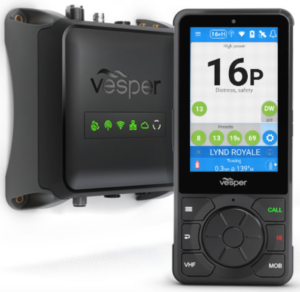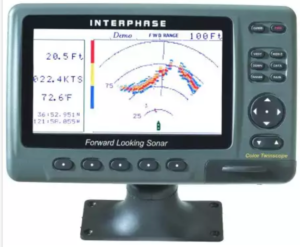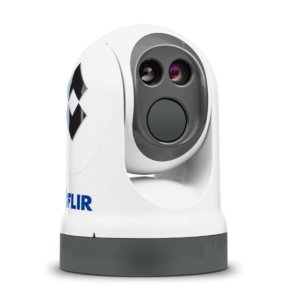Comms & Electronics
Probably one of the fastest areas of growth and change in boating over the last couple of years has been in the area of Comms and Electronics. It’s not that long ago ( less than 35 years) that cruisers navigated by the sun and the stars, looked up at the sky to tell what tomorrows weather was going to be and practiced good seamanship to get from A to B safely. Today, satellite email has replaced the old message in a bottle and the challenge for the modern cruiser is to ensure technology doesn’t erode our seamanship.
Lyn and I had also had some fun, out and about looking at what new technology was available, I couldn’t seem to rid myself of a tune running through my mind. The theme from Fiddler on the roof, “If I was a Rich Man”. Technology is an area you could do some serious damage to the bank account, not to mention the battery bank.
So, before we get carried away, just what is important for a cruising yacht?
Instrumentation.
For Coastal and Offshore cruising AIS is a must have.
There have been some great new pieces of technology in instrumentation and thanks to cleaver design don’t take a lot of power.
First up is AIS. AIS (Automatic Identification System) is a VHF radio system which automatically communicates vessel information (vessel identity, position, speed, etc) between AIS equipped vessels and via shore stations and via satellite in some cases with AIS position providers like Marine Traffic and PredictWind.
AIS was developed as a collision avoidance tool to enable commercial vessels to ‘see’ each other more clearly. AIS does this by continuously transmitting a vessels identity, position, speed and course along with other relevant information and receiving the same from other similarly equipped vessels. Calculating the information to give the user information on the other vessels
course and speed and most important any impending collision by calculating the CPA (closest point of approach) for each target. Many plotters now offer AIS as a feature and there are a number of standalone units, such as the Vesper “WatchMate” shown and the Vesper Cortex system that handles AIS and is a VHF transceiver Both units can Fiji and the . There are a number of advantages to a standalone unit, low power usage for offshore (few offshore boats will run a plotter 24/7) and a separate screen when entering a busy port with multiple contacts is easier to assimilate.

With the Vesper Cortex Unit you gain VHF as an integral part of the system using either the Cortex wireless handset or your mobile phone. If you’re starting from scratch or your testing has found your VHF lacking then this combo would be first on my list.
The Cortex can also wifi to other devises aboard via NEMA to provide remote reporting including an anchor Watch,
https://www.vespermarine.com/cortex/ais
Comms and Connection
Communications.
Now’s where your average lad starts to get a headache. There is just so much technology available in the communications arena, from simple wireless hotspot receivers to broadband via satellite, so what would suit your average cruiser.
Another devise that’s well up on my list is the Predict Wind Data Hub which is particularly well suited to tandem with the new Iridium Go Exec, which is now the new goto for comms at sea now that StarLink have come out an indicated connection at sea will be limited to Starlink Maritime, more on that in a Minute.
Lets start with the Data Hub. This smart device is the hub for all your GPS tracking, data and communications.

With the DataHub you can Broadcast GPS data via WiFi to all your tablets/laptops, so other navigational apps can benefit from the GPS position data. The unit also connects to and selects the best method of communication from wifi, cellular, satellite and so on. A new feature is the PredictMail service, unlike the Iridium Mail and Web app and other dedicated Satellite email services PredictMail uses your existing provider, gmail, hotmail, etc and compresses it for use with the Go Exec which means your at sea address is now your usual email address with all the same benefits. When you next connect to your gmail all your at sea emails will be there too. Many will have already used or be using PredictWind’s tracking service. With the DataHub your tracking now also show boat data along with your tracking and by connecting to all your other devises aboard means your personal devices only need to be connected to the hub to get access to everything aboard.

https://www.predictwind.com/datahub/
Iridium Go Exec
Released in early 2023 the Iridium Go Exec is the next iteration of the Iridium Go. Most of the design issues with the Go have been addressed and the unit is reported to be 40 times faster than the Go. Through PredictWind Satellite they have also introduced an Annual Plan based on data usage.

Supports a full range of global communications, including voice calls, free email access, applications, photo sharing, Whatsapp, Iridium free messaging and SOS alerts.
Unlike the Iridium GO! and other Satellite phones, the Iridium GO! exec™ has an IP internet connection to allow devices & Apps instant internet connectivity. For example the PredictWind Anchor App/DataHub can constantly monitor your boat.
Depth Sounders – Forward Looking Sonar
Next is forward looking sonar, effectively a depth sounder that looks forward as well as down. From meager beginnings these units have taken advantage of increased processing power and now give a clear indication of what to expect ahead and below, a “Virtual image” of the underwater area ahead of the boat. Brilliant. Front runners in this area are “Interphase” Available as a standalone unit or using their new SE-200 Sonar EngineTM adds scanning sonar capability to most of today’s multifunction and large panel displays and turns most video-capable chart plotters, radars, and other multifunctional displays into full-featured

forward-looking sonars.
The screen shot of the Interface unit shows the vessel approaching an entrance and clearly shows the channel opening.
If you like “Gunk-holing” (getting into and exploring every nook & cranny) or are looking at cruising the tropics where avoiding coral heads & reefs is a must then this unit is a great addition to your safety gear. I’d rate this a 6 out of10

Night Vision is next on the shopping list. These units used to be the domain of special forces but Ultra Low light and Thermal cameras are now starting to be seen on pleasure boats. Known as FLUR units the more sophisticated units like the Apollo II use both. One camera picks up ultra low light, seeing an image in as low as 0.00015 Lux then amplifying what is barely discernable light to the naked eye into a crisp detailed picture. Back this up with the units Thermal camera for images in total darkness and navigating a busy waterway at night is a breeze. These units are still at the pricey end of the scale so dig deep if they’re on your wish list.
Many of the top brands in marine instruments now have fully integrated networks, connecting wind, speed, autopilot, plotter, radar and sounder and the ability to display all this information and more on one screen. With features such as plotter/ radar overlay and the much cleaner and detailed return from the new “Digital” radars the user is able to check if a radar return is a mark or beacon or if it’s another vessel. The ability to split the screen to show multiple sources of information is also handy. These networks are best suited to new builds and by laying in the network cable at the build stage, peripherals can be added as your budget allows. Stand alone instruments are of course still available for older installations where a network is above and beyond or you’ve already got a collection of incompatible units. In this case the addition of the PredictWind Data Hub can enable you to wirelessly distribute NEMA information to other devises such as an iPad.
All of the above are designed to be used while the vessel is operating, in other words underway, so back to that Caveat business. There was an expression coined when Radar first became popular, “Radar Assisted Collisions”, then there was “GPS Assisted Groundings” . In other words keep an eye on where you’re going not eyes down at the instruments. With the plethora of information available and the number of screens to watch it’s a wonder we still have time to look ahead.
Communications Ashore
Access to the internet, your emails and of course the weather are almost non negotiable now and there are a number of ways to get it while in country. First up and easiest is via wireless hotspots. Open up your laptop or ships computer or connect to your PredictWind DataHub, click on the connections icon and in most ports around the world there will be cellular network connection or WiFi available. Your ability to connect to these networks is only limited by the gear you have aboard to receive and send signals.

In many places there will also be Wifi Available From something as simple as a USB wifi booster to a more sophisticated fixed unit like the Halo Long Range WiFi Extender.
Which when coupled with a fixed external high gain antenna will give you access even in low signal areas.
There are a number of downsides to Wifi, not the least of which is security but also the lack of a single provider nationwide, meaning it’s necessary to pay multiple providers as you move from area to area. Cellular connection can get around this, and the security issues. Units like the RUT935 and it’s more powerful cousin the RUT955 with dual sim, take a standard data capable phone SIM card and using a booster and high power antenna, up to 6 watt (your phone is probably less than 0.5w) give you access to the cellular network practically everywhere (depending on provider), with the 3G -5G network giving broadband speeds this is a great way to communicate.

The biggest leap forward for the average cruising yacht is the introduction of StarLink Roam for terrestrial use. This can be set up for a particular country or to Roam where ever Starlink has a license to operate on their Global Roaming.
Upgrade if money’s no object to the StarLink Maritime service, which at the time of writing had recently added a Maritime Basic option with lower connection speeds and a smaller antenna for an almost affordable cost. Watch this space (pardon the pun) as it’s a fast moving playing field with several other proponents in the space internet race.
Entertainment.
There is soooo much available in the entertainment arena. Effectively if you have the room and the power supply anything you’d buy domestically works.
Many live aboard have a modest 110-230V TV, Netflix, Prime or AppleTV Fusion do a great range of marine grade stereos and speakers but be careful here. When you start adding amplifiers sub woofer and lots of speakers the electrical use goes through the roof.
With reliable connection to the internet and for security we’re seeing many add camera’s to their vessels that can be remote monitored.
Tablet’s have now become the goto for many of the marine apps, Apple seem to be leading the way with this with the iPad. If you’re using it for navigation and don’t have a Data Hub aboard make sure you purchase a cellular capable iPad. You don’t need to install a sim but the cellular option gives you full GPS rather than the GPS assist that triangulates off cell towers and wifi and doesn’t work at sea. We’ll delve a little deeper into this in the next article Getting the right information
While we enjoyed our look at technology we only scratched the surface and brought to you a sample of what’s available. A quick search on the internet for just the communicationssection revealed over one million pages available, yikes! Also remember the unit is only a part of the cost, installation can often double the initial cost and it’s important to get someone with specific knowledge of the product and buy a recognised brand. This may cost a bit more at the outset but will save you dollars in the long run when things don’t go as advertised, a product bought for quality rather than price is far less likely to go on the fritz when like a good cruiser you are enjoying the peace and solitude of a remote anchorage.
And on the horizon? If I had my way it would be to make everything wireless particularly all charging but the boffins’ tell me that’s still a few years away.
© 2023 All Rights Reserved 3Sixty Marine Ltd T/A Offshore Cruising Academy or C&OC Intl.
